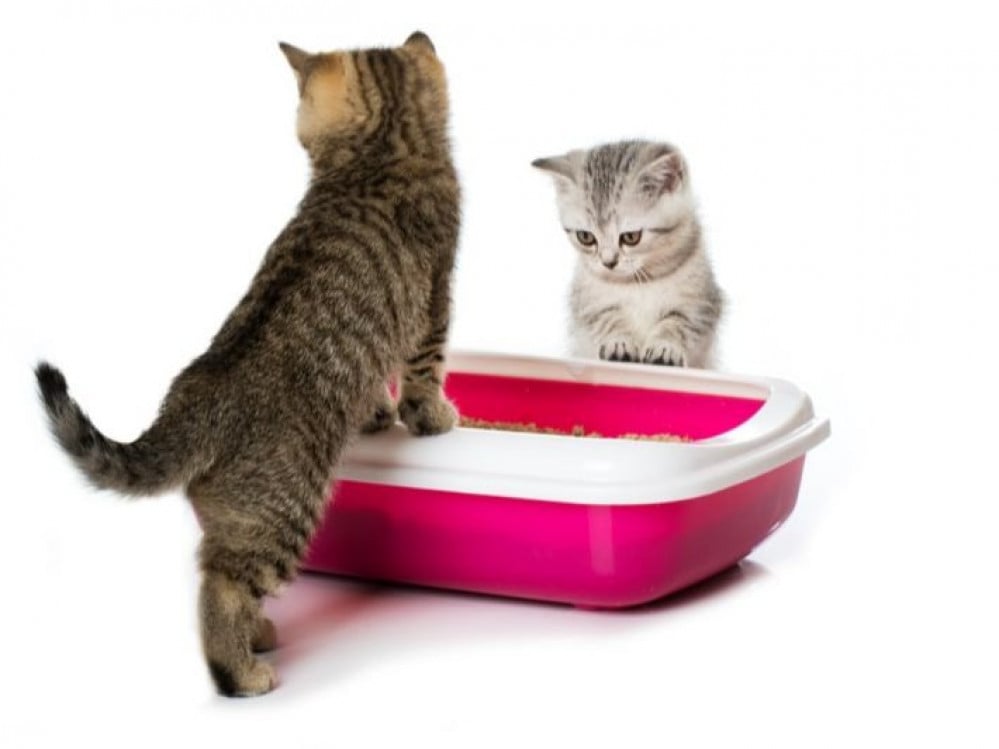If you have a domestic cat and notice unpleasant odors emanating from outside the litter box, you should think and search for the best type of litter used for the cat. The appropriate type relieves cat stress and prevents problems that may result from cat urinating outside the box, thus preventing the emission of unpleasant odors in addition to facilitating waste disposal. Therefore, you should not hesitate to try different types to get the best compatibility of the type of sand with the cat. [1]
Cat litter terms
There are a number of conditions that must be met in cat litter, including: [1]
Scented litter should be used to mask unpleasant odors in the litter box, but some cats don't like strong smells. Use unscented litter because it comes without a scent. Because some cats are sensitive to smells, it is worth noting that they contain carbon and natural plant extracts that have the ability to absorb odors.
Lightweight sand should be used; This is because it lasts a longer period of time compared to others.[2]
Clumping sand should be used; This is because clumping sand is easier and faster to clean and empty, and it also has good odor control and less alteration than non-clumping sand.
The sand must be free of dust. This is to avoid sensitization of the respiratory system of cats in the event that they inhale dust while digging. [3]
Types of cat litter
There are many types of sand used in the cat litter box, including: [4]
Clay minerals: This type consists of aqueous aluminum phyllosilicate, which in turn contains a number of elements such as iron, sodium and magnesium. These minerals are formed by the weathering process of other minerals, either due to thermal change or metal transformation. This type is divided into:
Lumpy sand: It is the most common type, and this clay is made of bentonite, as it is formed in the form of small balls when the cat urinates, and this type is characterized by the ease of removing the lumpy parts and preserving the remaining quantities of sand for the next use of the cat.
Non-clumping sand: This type is similar to lumpy sand but does not contain bentonite, and therefore small clumps are not formed in it, and one of its advantages is that it is good at absorbing odors, but due to its inability to clump, the sand must be changed and the box cleaned more frequently than lumpy sand.
Crystal sand (silica gel): This type is considered expensive, but it has a high absorption rate and lasts longer, and it consists of sodium silicate in the form of small granules.
Recycled paper sand: This type of newspaper is made from recycled newspapers in the form of granules and pellets, and this type is environmentally friendly and can be biodegraded, and it also has a high absorption capacity.
Pine sand: This type consists of scraps of wood or fallen wood from a source that can be recycled, and is processed and converted into granules or crushed pine wood. It is also biodegradable and environmentally friendly, but it needs to be changed more often than other types because it does not clump.
Ground wheat: This type comes in a lumpy and non-clumpy form, and this type is taken from non-food sources, and it is characterized as environmentally friendly and biodegradable, and unpleasant odors are prevented due to the presence of natural enzymes, but one of the dangers of this type is the possibility that some cats will be allergic if they eat it, Also, wheat can develop the fungus aflatoxin, which can harm cats.
Corn: This type is considered one of the common types, and it is a successful alternative to clay. It clumps well and does not need to be cleaned frequently. It also does not contain dust. In addition to the ability of corn to retain ammonia and the absence of odors, the problem is that corn develops aflatoxin faster than wheat. This can be harmful to the cat, and can attract insects when the box is left near the door.
Grass: one of the modern and expensive types. It is made from grass seeds. It clumps well when urine is absorbed and is biodegradable.
Walnut shell: This type is made of crushed walnut shell, and it is characterized by its large mass and absorption of odors, but cats may be alienated and stick to their claws and cause some chaos in the house due to its lack of smoothness.
Other information about cat litter
How to clean cat litter
To clean cat litter, the following must be followed: [6]
Daily cleaning: Excrement and clumps should be removed at least once a day and disposed of in a sealed trash bag and thrown outdoors, followed by washing the scoop and cleaning the edges of the bin and lid with soapy water.
Weekly cleaning: The cat litter must be completely emptied and the box washed with soap and water, avoiding washing it with chemicals that could harm cats, and then filling the box with new sand.
How to make cat litter
There are a number of steps for making cat litter at home: [7]
Tear up some newspaper and newspaper, then put the shredded paper in a large bowl.
Place the paper in warm water with a few drops of biodegradable soap added. The shredded paper will then have the consistency of oatmeal.
Filter the paper and then you must repeat the previous step, but without adding soap.
Sprinkle some baking soda on the paper, then start kneading the mixture, making sure to wear gloves.
Squeeze the water until the mixture is as dry as possible.
Break up the mixture and spread it on a screen and leave it to dry for a few days.
The paper is then ready to be used as cat litter.

